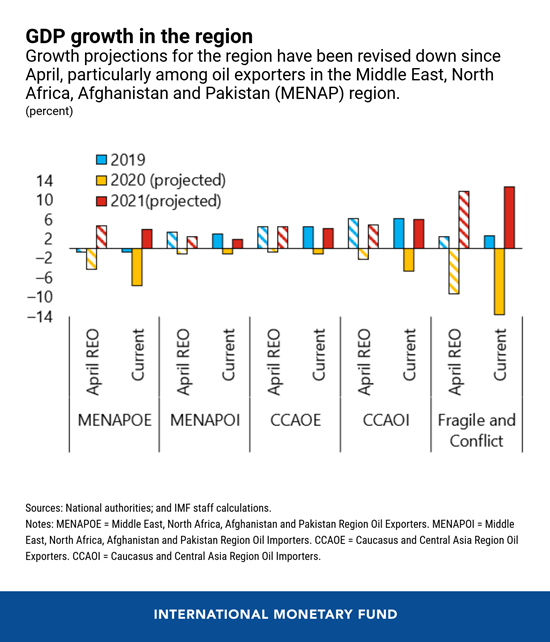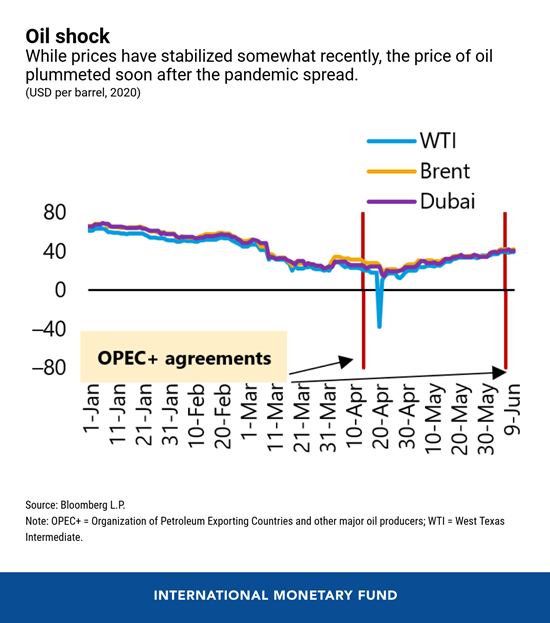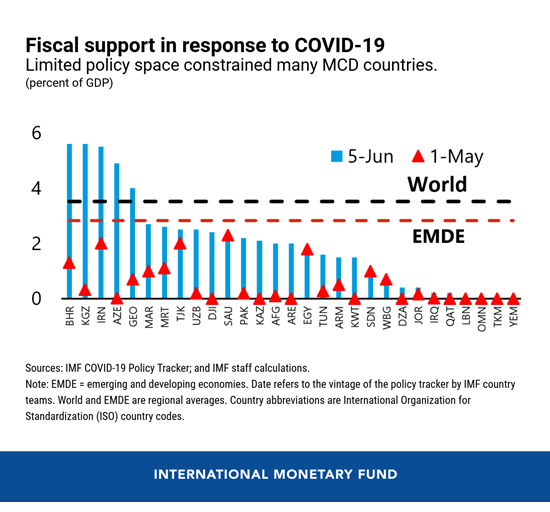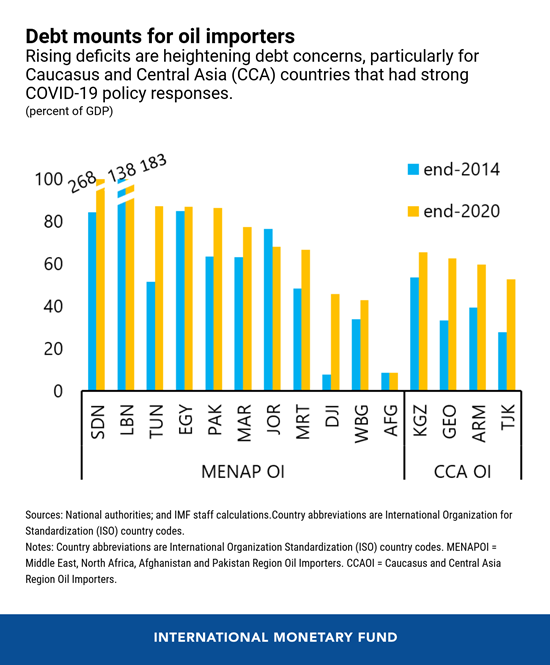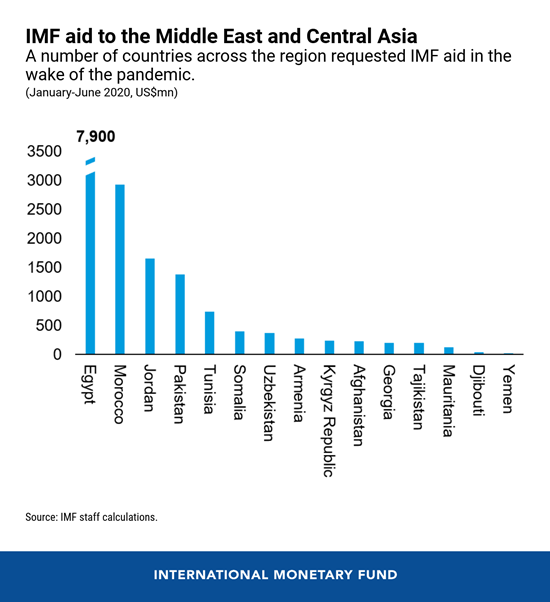
A man has his temperature checked before entering a building. The pandemic has had a large impact on countries in the Middle East and Central Asia. (photo: CHINE NOUVELLE/SIPA/Newscom)
Five Charts That Illustrate COVID-19’s Impact on the Middle East and Central Asia
July 16, 2020
The Middle East and Central Asia countries acted quickly and decisively in response to COVID-19. Despite their efforts, the pandemic has inflicted heavy economic damage on the region. Growth projections have been revised down since the April 2020 Regional Economic Outlook, the IMF says in its latest update to the report.
As many countries in the region begin to gradually reopen, policymakers will be tasked with mitigating the ongoing public health threat while also taking steps to rebuild economies and ensure that adequate social safety nets are in place. “The immediate actions countries in the region took as COVID-19 began sweeping the globe helped save lives,” said Jihad Azour, director of the IMF’s Middle East and Central Asia Department. “Ensuring health systems are strong and well-resourced remains essential as countries consider what kind of economies they want to build for the future. The IMF will work with countries to help facilitate the economic recovery and aid the millions of people whose livelihoods have suffered in the pandemic’s wake.”
Here are five charts that help tell the story of COVID-19’s economic impact on the region:
- The necessary containment measures, implemented to slow the pandemic's spread, together with lower global demand have had a significant impact on economic activity. Real GDP for the region is now projected to fall by 4.7 percent in 2020, a 2 percentage point drop from our April 2020 Regional Economic Outlook. Importantly, among countries that are fragile and in conflict situations in the region, output is now projected to shrink by 13 percent in 2020. Additionally, as the crisis hit in March, the region saw a sudden reversal of capital flows—which have since stabilized—losing an estimated $6 billion to $8 billion in portfolio outflows.
- Oil exporters faced a double impact brought about by lockdowns and severe oil market fluctuations. The agreements reached by the Organization of Petroleum Exporting Countries and other major oil producers (OPEC+), along with cuts in US shale oil production and some uptick in market expectations, have helped stabilize prices to an extent. However, prices are still well below pre-COVID-19 levels. As a result, a large part of the region’s growth revision is driven by weakened activity among oil exporters in the Middle East, North Africa, Afghanistan, and Pakistan (MENAP) region.
- The region's countries’ immediate policy response to the pandemic focused on healthcare spending, supporting the most economically vulnerable, and ensuring liquidity provision. However, the average size of fiscal relief packages was smaller than other regions around the world, which is largely the result of limited policy space among oil importers and the already significant public economic support seen among most oil exporters.
- The crisis has also led to a significant erosion of fiscal space. Debt sustainability concerns are a growing challenge for oil importers. Debt-to-GDP levels are now projected to reach an average of 95 percent of GDP by the end of 2020 in MENAP oil-importing countries and 61 percent for those in the Caucasus and Central Asia (CCA). Lowering debt and rebuilding buffers will be critical priorities once countries move beyond immediate pandemic-related recovery policies.
- The crisis has increased external vulnerabilities and has markedly reduced external buffers. Amid prospects for a protracted recovery in key sources of income for the region (oil, tourism, and remittances), international reserves could contract substantially across both MENAP and CCA countries. Multilateral support can play a key role in helping countries surmount these shocks. The IMF is actively supporting the region, providing nearly $17 billion in aid to the region's countries since the beginning of 2020 and helping to catalyze another $5 billion from official creditors. Throughout the challenges ahead, the IMF and the global financial safety net will remain steadfast partners as countries work to save lives and rebuild economies.








